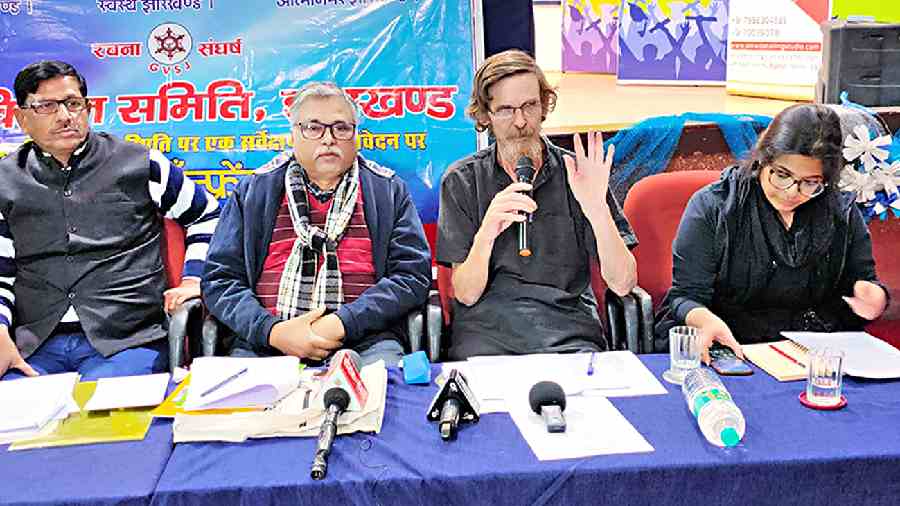The primary schools in Jharkhand reopened after the pandemic earlier this year but most of the students had forgotten how to read and write by that time, reveals a report written by economist Jean Dreze.
Dreze, along with Paran Amitava, wrote the report titled “Gloom in the classroom” based on the findings of a survey conducted by the volunteers of the Jharkhand chapter of Bharat Gyan Vigyan Samiti (BGVS).
“The survey was conducted during September-October this year in 138 schools — 72 primary and 66 upper primary — located across 26 blocks of 16 districts of the state,” Dreze informed, adding the schools were selected at random among those having at least half of the students belonging to SC/ST.
“Over 80 volunteers did the job across 16 districts during those two months,” said BGVS national president Kashinath Chatterjee.
The survey report was released in Ranchi on Monday by Dreze, Amitava, Chatterjee and BGVS state unit chief Shiv Shankar Prasadh.
Among the schools surveyed, only 53 per cent of primary and 19 per cent of upper primary had their teacher-pupil ratio below 30, as prescribed by the Right to Education Act.
About 40 per cent of the primary schools are run by para teachers who had been working on a consolidated pay for about two decades and constitute about 55 per cent of the total teachers at the primary level in the state, the survey found.
About 20 per cent of primary schools are run by a single teacher, a para teacher in most cases, the report said.
Two-thirds of the schools surveyed did not have a boundary wall and 64 per cent had no playground.
Lack of water supply and electricity was also very common.
During the survey, teachers of about two-thirds of those schools said they did not have adequate funds for offering mid-day meals.
Though about 10 per cent of the schools were found not to give eggs in mid-day meals twice a week, those who conducted the survey felt the number would be much more.
Students’ attendance went down, the survey found. While 68 per cent of students were found in primary schools on the survey days, there was only 58 per cent in upper primary schools.
The survey uncovered two distinct sets of problems — chronic deficiencies like a shortage of teachers and lack of infrastructure that pre-dates Covid-19 and recent problems created by the crisis, the report said.










